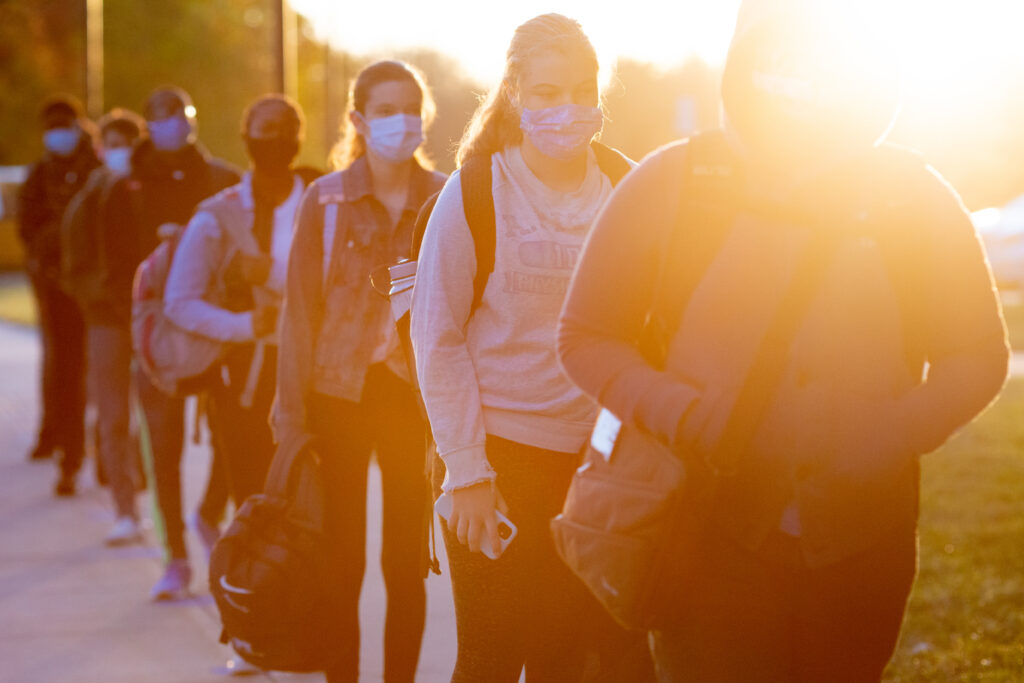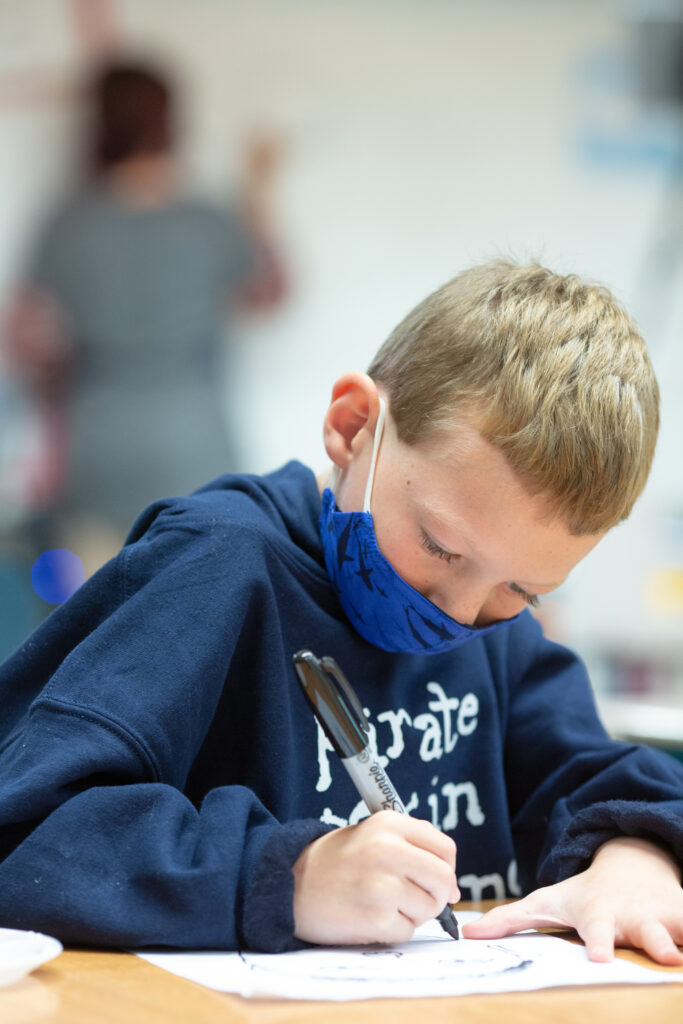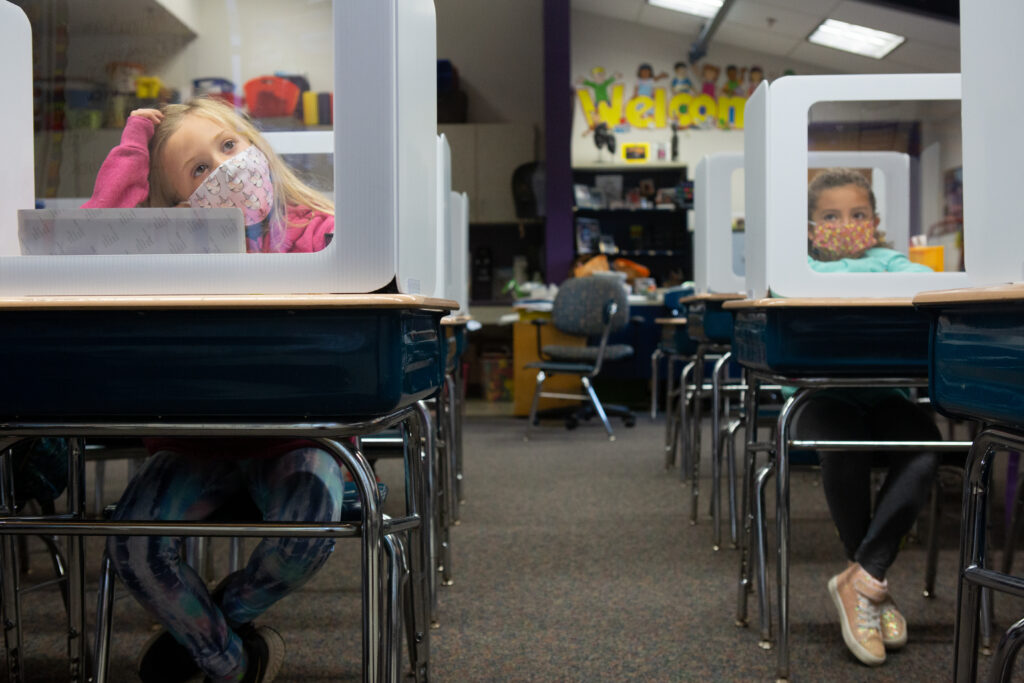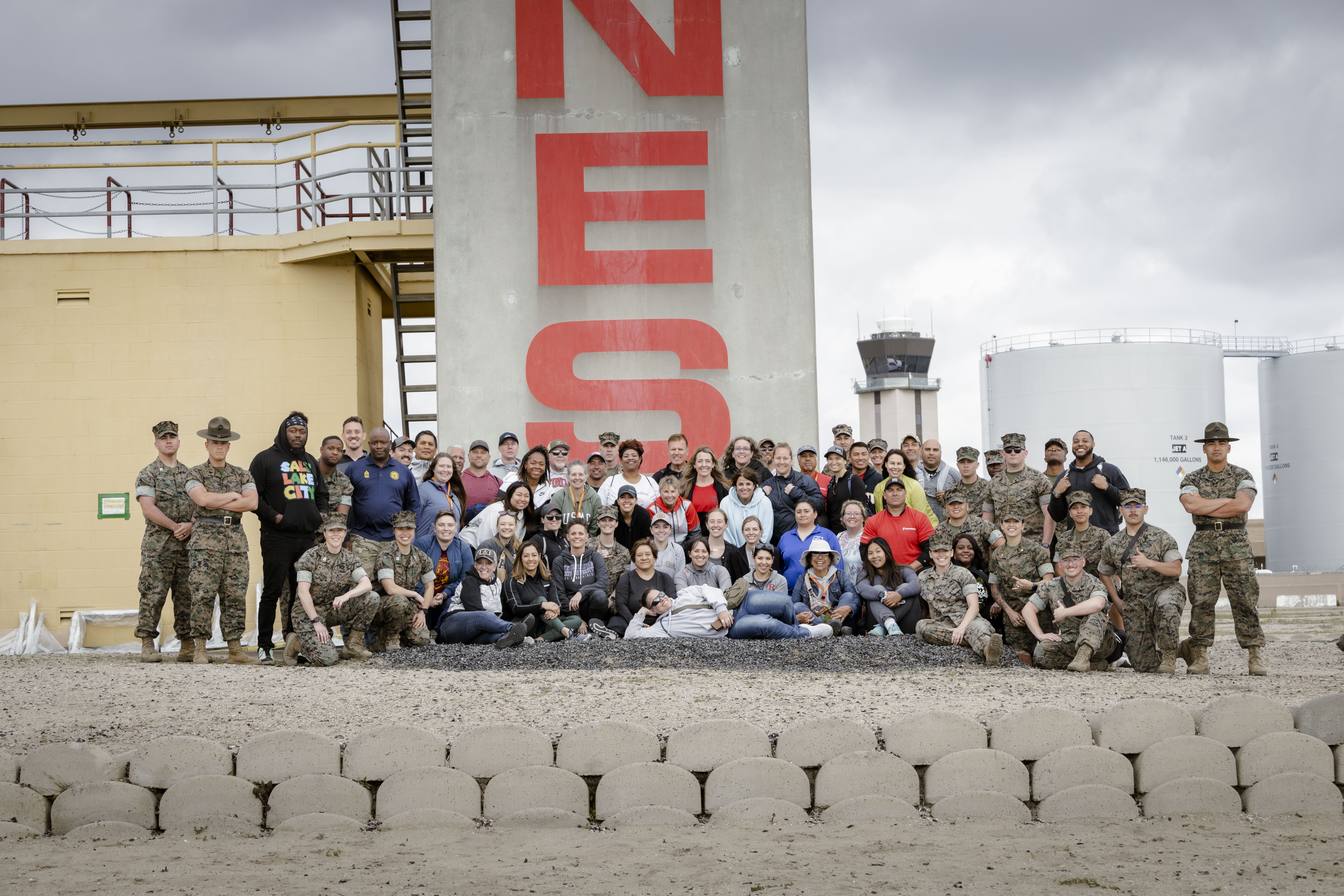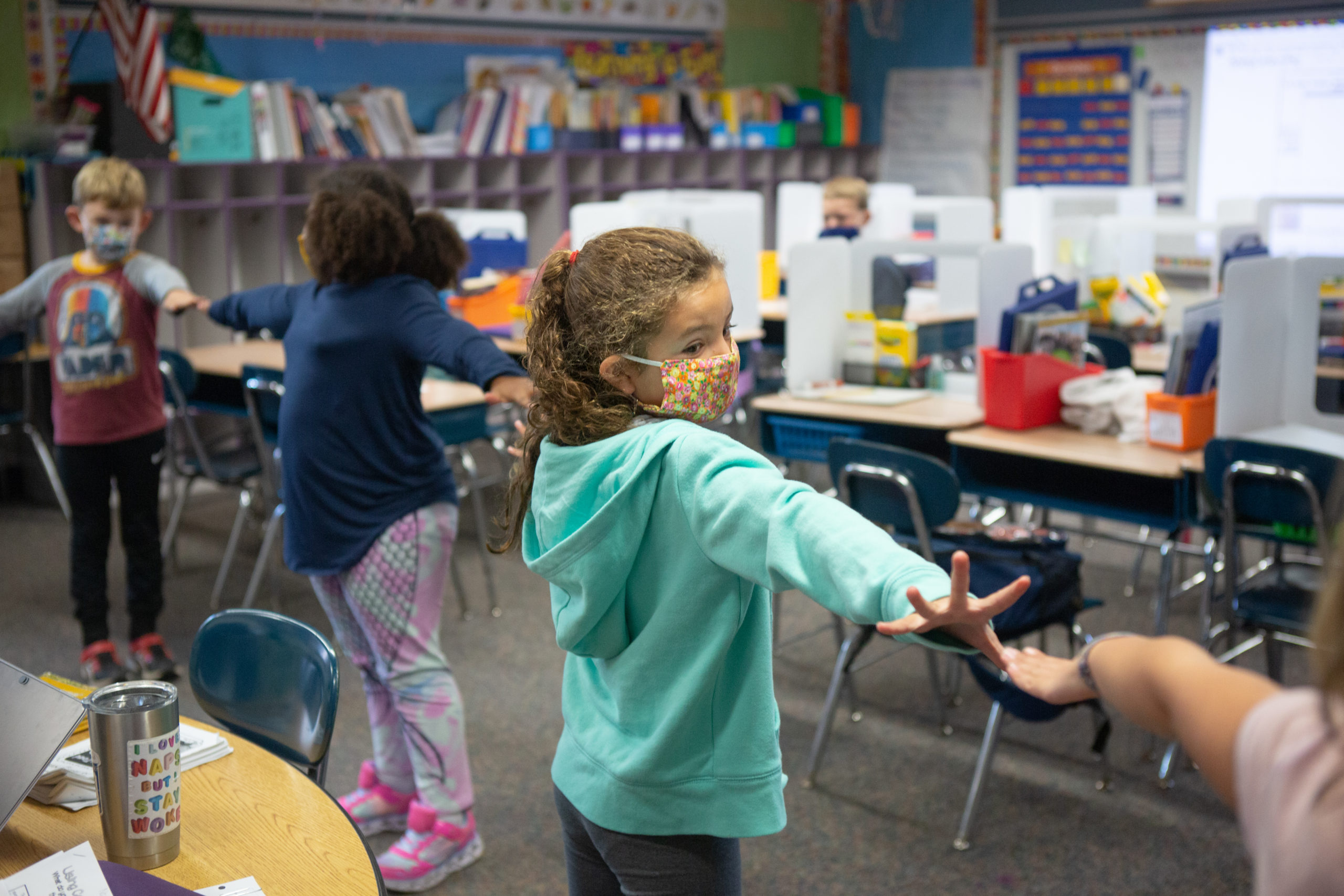
A COVID-19 Education Case Study: Idaho, Local Control and the Pandemic
When it comes to reopening schools for in-person learning during the COVID-19 pandemic this school year, Idaho has been a study in contrasts.
K-12 students in some remote rural districts have been back full face-to-face, masks optional and social distancing not enforced, since the beginning of the school year. In some more urban areas, older students are still in school part-time at best (the so-called hybrid model), with plans afoot to bring everyone back full-time in-person in the spring.
Like traditional district schools, public charter schools have ranged from being fully open most of the year to taking a more cautious approach. Generally speaking, larger charter schools and charter networks are more likely to be serving most students in-person most of the time than are larger school districts.
The Gem Prep K-12 charter school network has kept its Pocatello campus fully open all year, because COVID spread has been less of a problem in southeastern Idaho than in the Treasure Valley, the most populous part of the state. Gem Prep’s two Treasure Valley campuses, in Nampa and Meridian, were in hybrid mode (half the student body alternating in-person and remote days) until just after the holidays, when they, too, were open to fully in-person instruction.
Meanwhile, the Nampa School District — the state’s third largest district — has yet to return to fully in-person school, though that is likely to change in March.
Although teachers in particular were anxious about coming back into buildings full-time, the transition has been mostly smooth, said Jason Bransford, Gem Prep’s CEO.
“We allowed for our staff to have a voice in what we’re doing, and everyone has had an opportunity to give input. By allowing people to have a voice, we can say we have heard the concerns and we’ve taken as many steps as possible to address those concerns, but it was time for our students to come back,” Bransford said.
Three factors seem to be at play as charter schools and networks and districts navigate this tricky landscape: Whether the school or district is a more urban or rural environment; the political leanings of the surrounding community; and the size of the school or district.
Big urban districts are the least likely to be fully open. Small rurals, particularly in the more conservative parts of the state, where the pandemic is viewed skeptically, are more likely to be operating as though there was nothing different in 2020-21 than any other school year.
With the support of the Idaho-based education nonprofit Bluum, we profile how three Idaho school districts, one charter school network, and two single-site charters — one large and suburban, one tiny and rural — have managed decisions about how and when to open and close.
West Side School District
On one end of the spectrum is the West Side School District located in Idaho’s southeast corner near Utah. West Side, with just under 800 students, was forced by its local health district to close last spring, when the pandemic first hit. The closure was highly unpopular in the community, said Superintendent Spencer Barzee, who called the order “a mistake.”
So when the state government allowed districts more local control over whether to open, West Side re-opened its doors to all students in August.
“We started back full in-person in August and have not had one day out since,” Barzee said. “We offer a remote option, but fewer than 10 kids have opted for that. Most people, the vast majority, don’t want to wear masks. They don’t want to stay home. They just want everything to be normal.”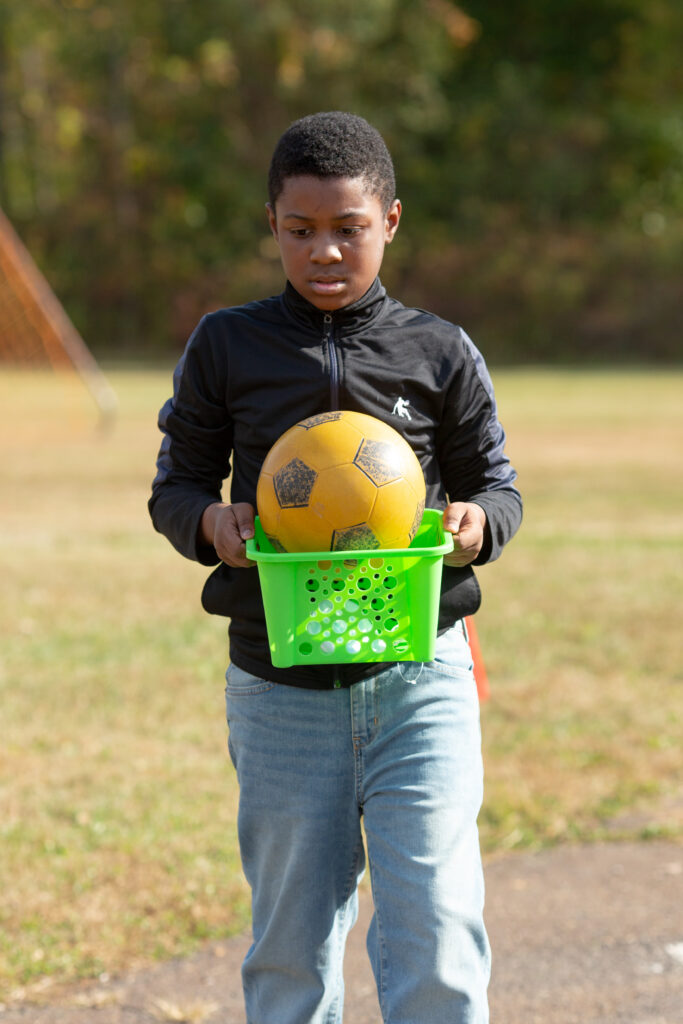
West Side has never mandated masks for students or staff, and only about 5 percent of students and staff wear them, even though the district encourages them to, Barzee said. Nor does the district attempt to impose social distancing in classrooms or on the playground.
If someone in a household tests positive, then the district asks their children to stay home for 10 days. But if someone in a home is sick but doesn’t get a COVID test, or if kids have sore throats or runny noses, they can come to school.
“We never encouraged testing that way,” Barzee said.
What has been the result? Back in the fall, when the virus was spiking, West Side struggled to find enough substitutes for the several staff members who were out sick with COVID-19. “But it was never enough that I had to shut down school. We just were really aggressive about keeping school open and I am confident that was the right decision,” Barzee said.
Kimberly School District
A two-and-a-half hour drive to the northeast of West Side, Kimberly, a 2,000-student, affluent district near Twin Falls, took a slightly more cautious approach. Like districts across the state, Kimberly closed down last March for the remainder of the 2019-20 school year.
Superintendent Luke Schroeder, who served on Gov. Brad Little’s K-12 Covid council, said he began worrying a year ago but how to get his schools reopened for the start of the 2020-21 school year.
Last March, Schroeder and his staff spent a couple of days building an online learning program that carried the district through the end of the 2019-20 school year. Over the summer, Schroeder said, they worked enhancing online learning and putting lessons online in case the district needed to deploy it this year.
For the most part, though, schools in Kimberly have remained open so far this year. Twice, for a week each time, the high school had to go to hybrid learning because of Covid outbreaks, “but other than that we have been face-to-face four days a week.”
Unlike Barzee’s West Side district, Schroeder did impose a mask mandate and social distancing in his schools, despite significant pushback. “The face-covering decision was one of the very few 3-2 school board votes we’ve had,” Schroeder said. “Usually it’s 5-0 or 4-1. But the community is divided and even the staff is divided on the issue of face covering. I know this is a political statement, but I follow the science and I believe face coverings did a tremendous job with mitigation.”
Early this school year, the Kimberly district decided not to exclude students who had been exposed to the virus at school. The rationale, Schroeder said, was that masks provided protection, and if parents felt comfortable sending their children, and schools monitored carefully for outbreaks, it was better to have those kids in school.
But staff and students who had a household member test positive were required to stay home until symptoms subsided or they had a negative COVID test. People with one symptom could return after 24 hours of improved symptoms, while people with multiple symptoms had to wait at least 72 hours after all symptoms had subsided
“People kind of looked at us thinking we were a little crazy, but we ended up being very successful with this approach,” Schroeder said. “At first the staff was very nervous, especially in the fall when our numbers were high. But Twin Falls, right next to us, went hybrid, and our staff infection rate was about a third of theirs even though we were fully face-to-face.”
Because mitigation strategies in both the Twin Falls and Kimberly communities were minimal, Schroeder said, kids and teachers alike ended up being safer in school than out in the world at large
Nampa School District
Adjacent to Boise, the Nampa School District, Idaho’s third largest with 13,000 students, has not yet gone to full-time in-person learning for its middle and high school students. Secondary students have moved from fully remote to hybrid mode — rotating in-person and remote in cohorts — since mid-January. Barring an unforeseen spike in cases, that will change to fully in-person by sometime in March, said Superintendent Paula Kellerer.
Elementary school students started the school year in August fully remote for three weeks, transitioned to hybrid until Thanksgiving, and then, as cases spiked, went back to remote until mid-January. Since mid-January, elementary school students have had four days of fully in-person learning for the first time this school year.
One reason Nampa has struggled to open, Kellerer said, is the virus was spreading inside schools. “What we were finding was that we were transmitting on campus. Our close contacts that were quarantined were actually moving to positive cases,” she said.
The 13,000-student district has struggled at times to staff its schools with enough teachers, Kellerer said. One of the biggest challenges has been substitute teachers. While there haven’t been more regular staff absences than usual, the substitute pool evaporated, especially during times when the district was in the highest ‘red’ category for COVID cases.
“We have a pool of about 300 substitutes, but only about 70 of them have been willing to work,” she said. Mondays and Fridays have always been when demand peaks for substitutes, and there have been days when supply didn’t meet that demand. In more normal times, the district can find enough subs to cover if 100 teachers are out — about 10 percent of the teaching force — but during the worst days of the pandemic, that number has been cut in half.
Kellerer said Nampa partially solved that problem by offering substitutes a $100 weekly bonus if they taught for a full four-day week.
Having elementary students back in person has not caused any outbreaks, Kellerer said. Classes are kept separate, with small groups of kids in ‘pods’ that stay together throughout the day. This same system won’t work in high school, where students take different classes with different groups of students.
“We’re still talking through the logistics there, but we’ll do our best to keep kids as far away from each other as we can,” she said.
Gem Prep Charter Schools
As mentioned earlier, all three of Gem Prep’s in-person, K-12 campuses have returned to fully in-person learning after the two Treasure Valley campuses spent several months in hybrid mode. While the transition has been smooth overall, teachers did feel some anxiety about returning to full-time in-person instruction, even as parents expressed eagerness bordering on desperation to get their children back in school, CEO Bransford said.
“Throughout this pandemic we have surveyed our parents, our students, and our teachers and there has been a pretty big gap between parents and teachers,” Bransford said. “The teachers had far more concerns than the parents did.
By communicating consistently and demonstrating to staff that there was little or no spread of the virus on campus, Gem Prep helped alleviate those concerns. It also helped that Gem Prep was meticulous in enforcing its own safety protocols, and talking about them constantly.
“We just hit that over and over and over again all school year and I suspect people got tired of hearing it,” Bransford said. “At this point, most people feel comfortable with it. I think those staff members who continue to lack the comfort level we just say here’s the reality: We’re holding school and we expect you to be here. And they show up.”
Compass Charter School
Compass Public Charter School is a 1,200-student K-12 school located in Meridian, within the boundaries of the West Ada School District, Idaho’s largest. Compass, like all other schools in Idaho, closed to in-person learning last spring as the pandemic first reached the state.
As the 2020-21 school year approached, Compass planned to reopen to fully in-person learning. But a spike in local cases forced the school to go remote for the first couple of weeks of the academic year, and then gradually return to its own version of a hybrid model.
Unlike many schools and districts, which alternated days when different cohorts of students attended in person, Compass opted to have one cohort come for an entire week, and then the other cohort attend the following week. Alternating weeks for each cohort were sent in remote learning. A mask mandate for kids and adults has been in place since the start of the year.
Kelly Trudeau, Compass’ secondary school principal, said Compass chose this version of hybrid for three reasons. First, it made teacher planning simpler. Teachers prepared a week’s worth of lessons that they delivered twice in consecutive weeks to different cohorts. The cohort learning remotely would then “work on the materials and application of the lessons at home,” until students mastered them. Then the cycle would repeat with new lessons.
The second reason was that having the same cohort of kids in school for a full week provided more consistency for kids than attending one day on, and then staying home for a day.
The third reason was that with a limited custodial staff, having the same kids in school every day for a week meant that deep cleaning didn’t have to happen at the end of every day, but rather at the end of each week.
Compass gradually phased out hybrid schooling in early October, bringing back kindergartners and first-graders, then, a couple of weeks later, second and third grades, until, by Thanksgiving, K-6 was back learning fully in person.
Getting secondary students back into full-time learning has been a slower process. Seventh and eight-graders resumed full-time school in person in early February. Following spring break in late February, ninth and tenth grade will return, followed by upperclassmen the week of March 8.
While this approach might seem cautious, it’s actually bucking the recommendation of the region’s health district, Trudeau said. “They are pretty much of the belief that we should not have kids back in school,” she said. “I believe we have lost sight of our goal (of having kids in school) in favor of making sure no kids ever get the virus.”
Frustrated with the local health agency, Compass started doing its own contract tracing to prevent outbreaks at school. “It has helped a ton,” Trudeau said. “I can contact people and get them quarantined quickly.” As a result, while there have been cases of kids with COVID, there has been no in-school spread.
Compass not only has kids in cohorts, but in kindergarten through eighth grade in pods of three or four kids who stay together all day, even at lunch. “I can’t keep them six feet a part because my classrooms aren’t that big, but the pods can be kept distanced, and that has worked well,” she said. Plexiglass dividers on desks provide extra protection.
Fernwaters Charter School
Located in the small, remote town of Salmon, 250 miles northeast of Boise, Fernwaters Charter School serves 62 students in grades 4-8, in mixed-age classrooms. The school, which opened in 2018, complements but is independent from the nearby Upper Carmen Charter School, which serves kids in kindergarten through third grade.
After closing last spring when the pandemic first struck the U.S., the Fernwaters community made a collective decision to open in-person at the beginning of the 2020-21 school year. It has remained open throughout the year.
“The political sentiment in the community changed between last March and the summer. People who have been fearful in the spring were no longer so fearful,” said Kristin Foss, one of Fernwaters’ two administrators. “And they had a lot of frustrations with kids in different schools (local district and charters) and the lack of learning that was going on.
Teachers had pivoted rapidly to teaching online in the spring, but felt they were more effective in person and were eager to get kids back in classrooms.
“So what we decided to do was just open live and give people the option to learn from home,” Foss said. “One family, with two children, opted to stay home. Everyone else showed up, and has stuck with it.”
The school has played it safe. Whenever the region was in a risk category above the lowest, masks were mandatory in school and staff and students had their temperatures checked. Desks are sanitized twice a day, using the same cleaning solution employed by the local hospital. Kids must wash their hands regularly.
The school did a deep cleaning over the winter holidays, and even on the coldest days, doors and windows have stayed open to help with ventilation. “We’ve burned about 200 more gallons of propane than usual,” Foss said.
But the precautions have paid off in a healthy school community. “None of our students have gotten coronavirus, and none of our staff has tested positive,” Foss said.
Some kids have had to quarantine because a parent has tested positive. The school invested in iPad Swivls, small robots that pivot to capture on screen whoever is speaking. Fernwaters has used those when kids are out on quarantine. Students can log in from home and watch the live class in real time. Teachers post assignments online to keep the quarantined students from falling behind.
Lasting lessons
COVID-19 has probably forever altered some practices of larger schools and districts, while the smaller schools don’t foresee any permanent changes.
Bransford of Gem Prep said schools — and families — have grown at least somewhat familiar and comfortable with learning online. As such, they can no longer allow sick days, snow days, or vacations taken during school weeks to be used as an excuse for students falling behind in their work.
“Everyone in our organization sees that being in school and learning isn’t the only way to get in learning time,” he said. “In the past, schools have largely allowed students to fall behind when they’re out of school for whatever reason, and we give them makeup work that’s usually useless worksheets.”
“The reality is we as an institution of education, not just my organization but across the country, have done a really crappy job in the past of helping those students whenever they needed to be at home,” Bransford said. “This past year has shown that our students can learn and our teachers can teach online. There’s some new skills that they’ve got to learn but they’re learning them right now.”
ABOUT THE AUTHOR
Alan Gottlieb is a Colorado-based writer, editor, journalist, communications consultant, and nonprofit entrepreneur who owns Write.Edit.Think, LLC. He founded EdNews Colorado, which later merged with Gotham Schools to form Chalkbeat.
—


